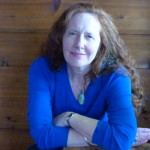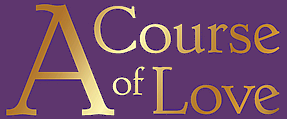 The answer lies in your response to love. T1:2.3
The answer lies in your response to love. T1:2.3
Do I know where, along the path to the cabin, the tree roots protrude beneath the insubstantial but concealing cushion of leaves? Do I have enough muscle memory to avoid the dips and rises? I sit down at the cabin window and pull a plain but lovely twig of the grapevine from my hair. It’s my first time out in a few days. I came without my cast. The first time I tried walking out in the cast, and had the cast’s hard surface meet the uneven and ungiving firmness of the now compacted and cooling down floor of the woods, (not to mention roots and newly fallen limbs), I knew it wasn’t going to work and I stayed in, sitting in the sunroom (with my feet up) looking out. Oh man, the metaphors I could draw from this failure to rest an injured part, to be willing to do just about anything but.
I took a fall in August, found my ankle swollen that night and the next, but not being in any pain or even much discomfort, I carried on as usual. Long story short, it took months without healing and my then upcoming trip to Sedona to cause me to revisit it, get an x-ray, and discover a fracture. I was sent home and went to Sedona in my boot cast, but didn’t exactly stay off my foot.
Returning from Sedona, I embarked on my annual adventure with my daughters and  their families, enjoying the fall leaves in the small river town of Red Wing. All the walking that we did there put me over the proverbial edge that an injured person sometimes must fall over before they respect their injury. I thought the cast was enough in itself. It wasn’t.
their families, enjoying the fall leaves in the small river town of Red Wing. All the walking that we did there put me over the proverbial edge that an injured person sometimes must fall over before they respect their injury. I thought the cast was enough in itself. It wasn’t.
So now I’m resting. Last night I became gleeful with the rest and a love for my life. I was home from my ACOL travels, home from visiting my mom, Henry had gone back home after his day here, and I was wandering from kitchen to living room when it happened. Donny had made baked kibbee and I made it into a sandwich with cream cheese, mint and flatbread, and then went back and made another, and still left the mess out, not yet being sure if I might return for still another. There between kitchen and living room I realized how happy I was. Then I returned to my seat near the TV, raised my feet onto a stool, and variably watched, read a magazine, and browsed a new book that had just arrived in the mail.
It is at least a little akin to the wandering that I do out here, a meandering sort of existence for which I always enjoy finding support.
Without the trip to Red Wing, I might not have found the support for such a life offered by an unlikely source: a composer. As I sat, reading the morning paper in the lobby/breakfast area of the hotel, drinking coffee and eating cinnamon raisin toast, I found a kindred spirit who helped me attend to my joy—not only in resting—but in being the way I am.
The article starts out this way: “When events overwhelm composer Jake Runestad he responds the only way he knows how: with music.” An upcoming performance is described as an “evening of beauty and loss.” Right there I was hooked, because the best word I’ve found to describe the experience that began with receiving ACOL has been feeling overwhelmed, and one of its major themes has been the adjustment it is to hold opposites in harmony, or even to hold them at all, to keep them connected.
One of the events Jake responded to was the police shooting of Philando Castile, a black man who worked in a school cafeteria here in St. Paul and was loved by those best qualified to see goodness: the children. Jake spoke first of being “a middle-class white male, an artist” and of struggling with the idea of privilege “in ways I can’t necessarily help.” Then he said he attended the memorial wanting to show support and be there “but also trying to figure out what role I could have. I don’t want to trivialize anyone or anything, so I decided the best way I can respond is through my art, to try to foster compassion and bring beauty into the world.” His event this weekend is to honor those lost to gun violence. (You can listen to some of his music here: (http://jakerunestad.com/)
Jake says his art is a way of discovering, of trying to understand or question something. That is what my “art” is to me too.
In order to make a living, Runestad travels three or four times a month to meet with people (I assume other composers, or budding composers). “These are people I’ve never met in my entire life. I arrive to work with them and it’s like, suddenly, we know each other because we connect through music. I’ve never felt that with anything else before.”
Jake arrives at his meetings. I arrive at my Course of Love events where I, too, meet people I’ve never met before, people who are responding the only way they know how. And it’s like we know each other, we connect through A Course of Love.
And some of it has to do with injuries. . . and our holding of them. Holding world events of pain in the embrace of the love that is also going on. Holding the major injury experienced in not being who we are alongside the major healing into wholeness going on. Holding activity in the embrace of rest. Holding injuries of the closed heart together with the new feelings of the open heart. You and I can feel hurt, weakened, or wrong—but it is in a new response that we discover the injury’s gift, and begin our recovery.
 We are, in that old saying, “on the mend.” We are also in movement. In our responses of love to love, you and I find beauty and compassion and the desire to create that which will heal, inspire, and bring new inner and outer worlds into being.
We are, in that old saying, “on the mend.” We are also in movement. In our responses of love to love, you and I find beauty and compassion and the desire to create that which will heal, inspire, and bring new inner and outer worlds into being.
In activity and in rest, we are carried on! And along the way, we come to express the truth of who we are.
From A Treatise on the Art of Thought:
The truth is the truth and not dependent upon your definition of it. A response is not an interpretation. A response is an expression of who you are rather than of what you believe something else to be. T1:4.18
St. Paul Pioneer Press, “Young composer seeks harmony in social justice questions.” Chris Hewitt. C1 & 10.



I Love your writings Mari, and wish you speedy recovery from your injury.
Thank you for sharing.